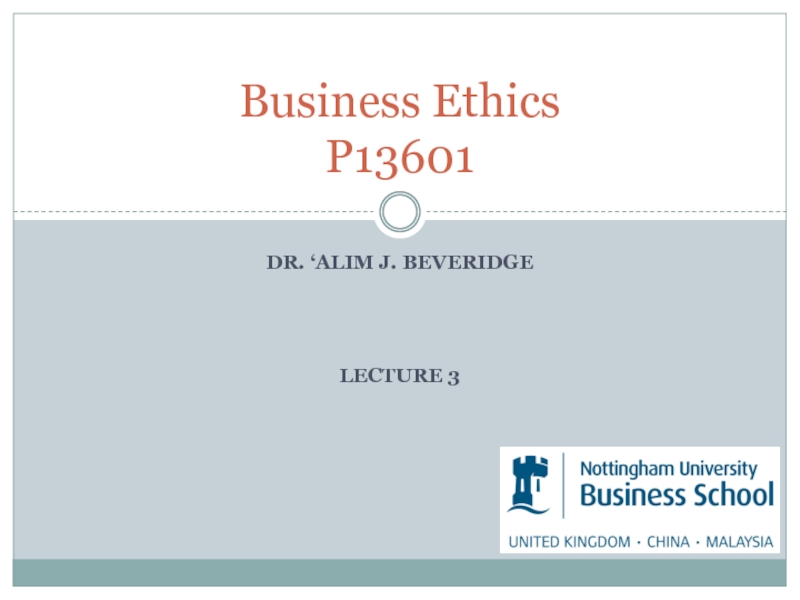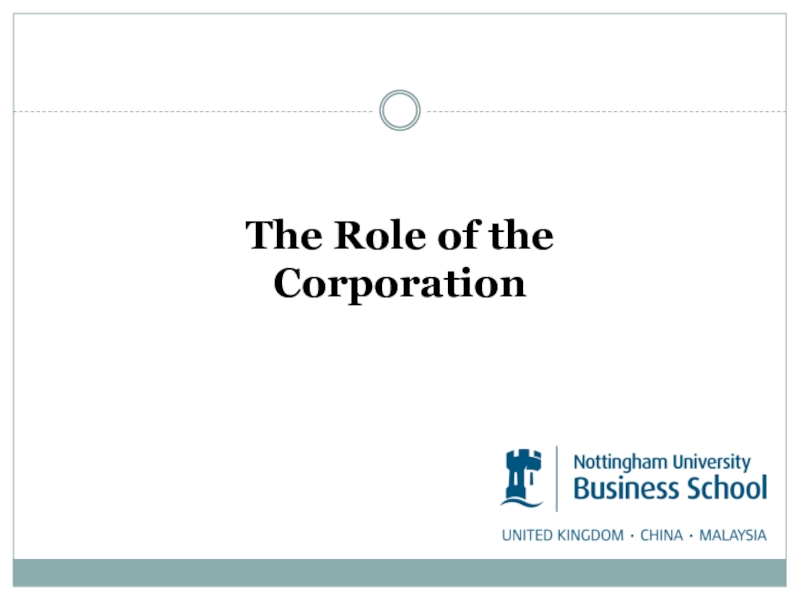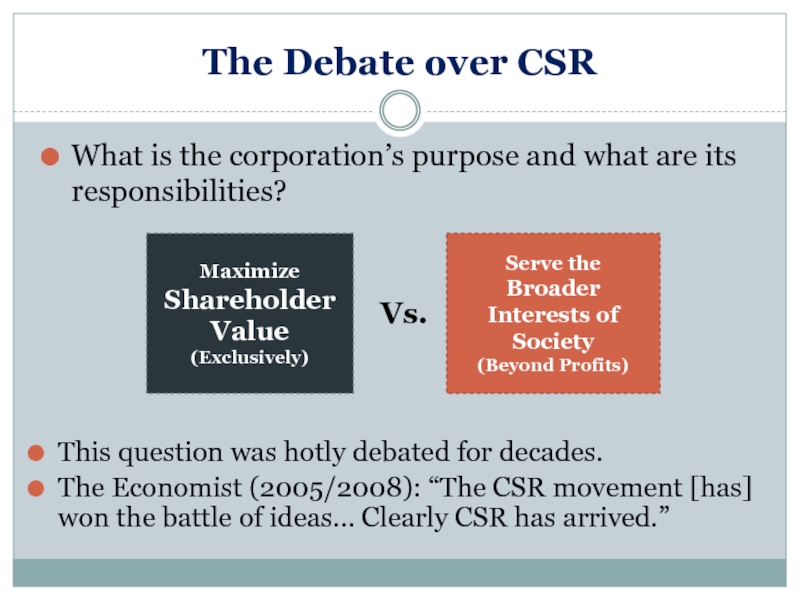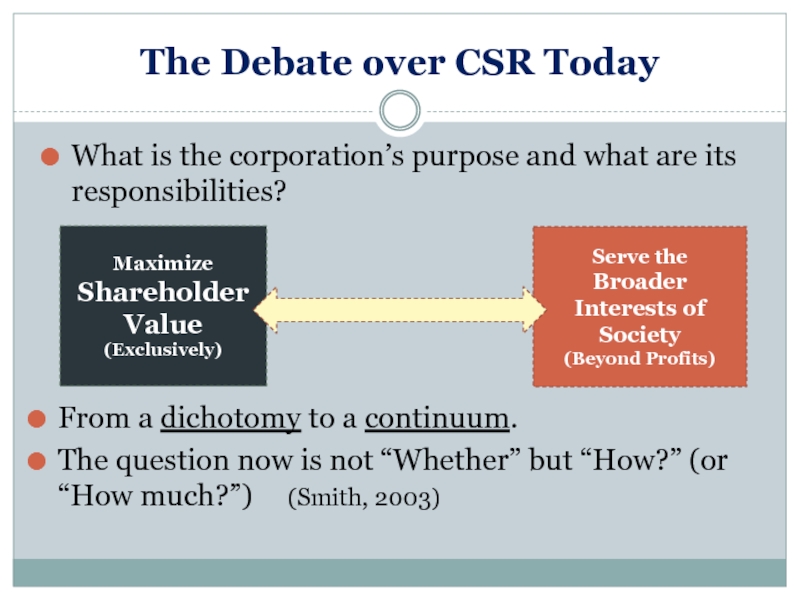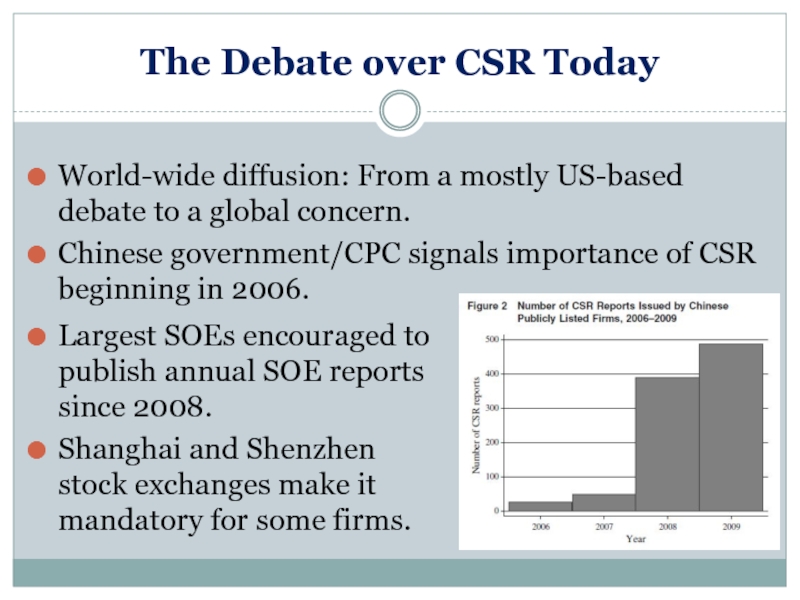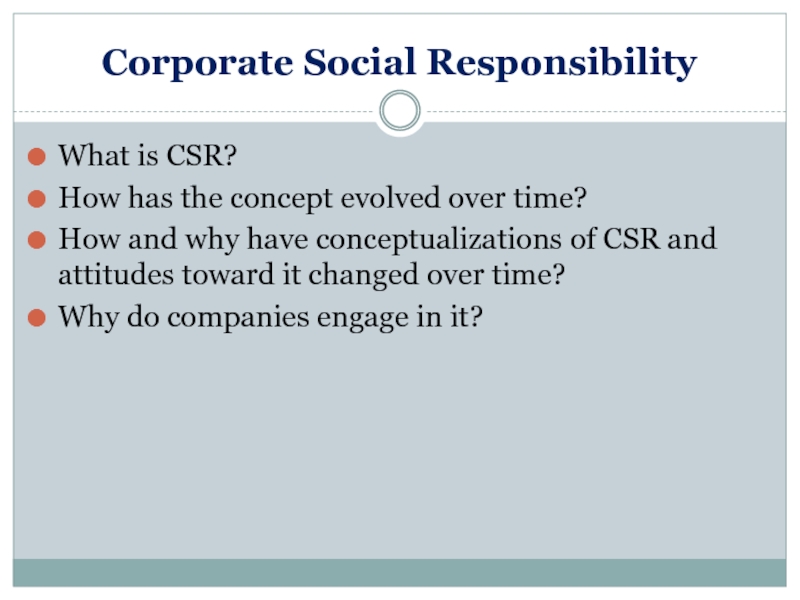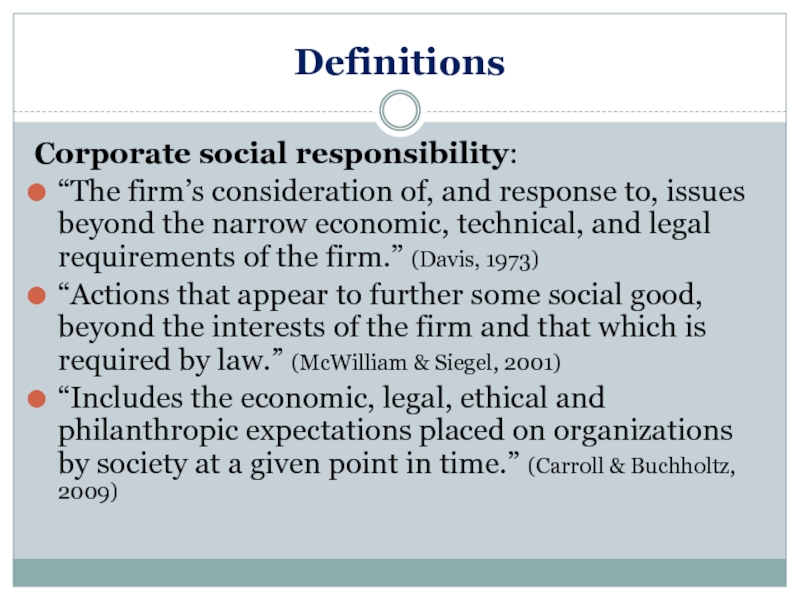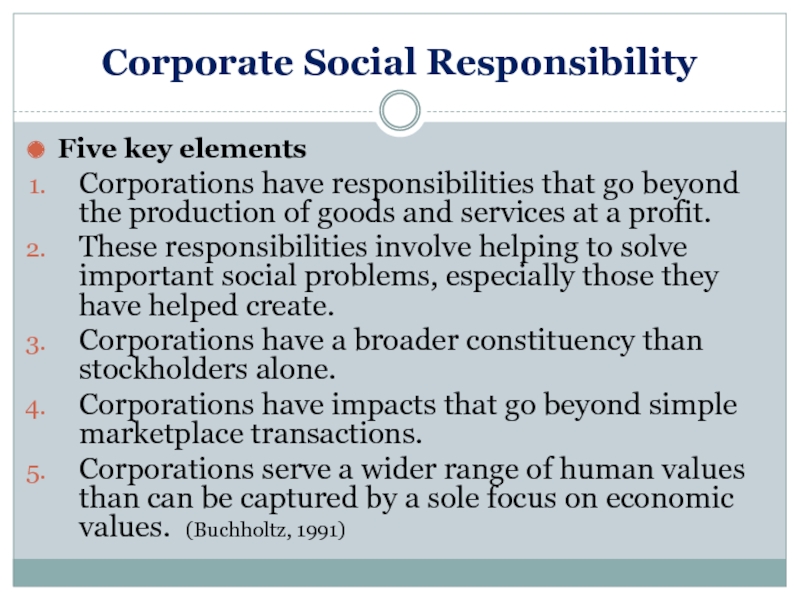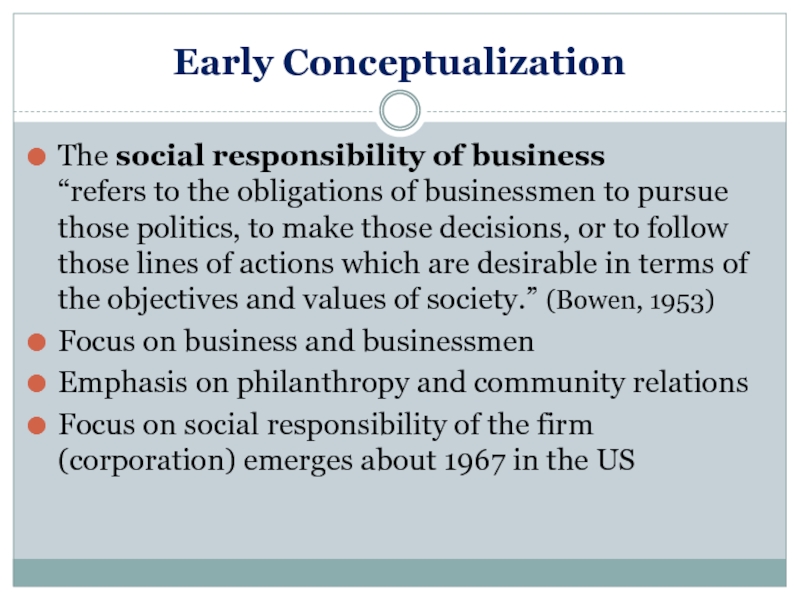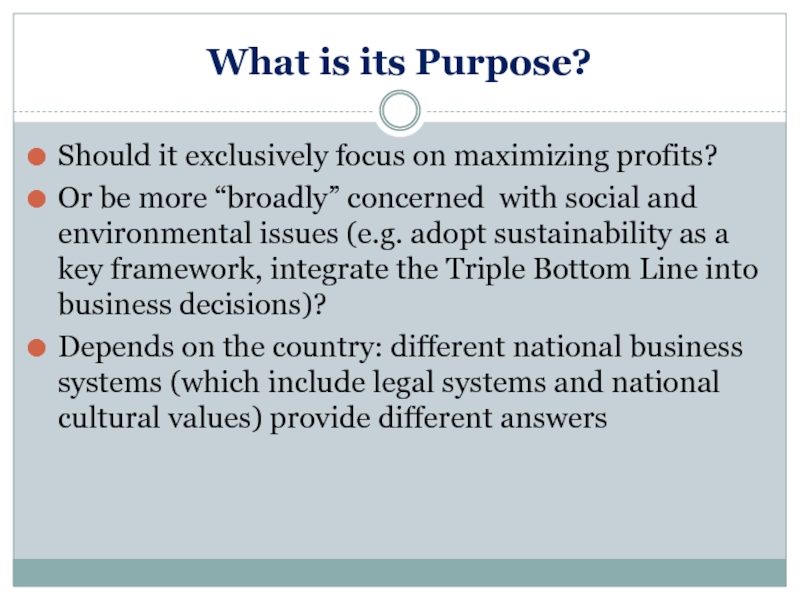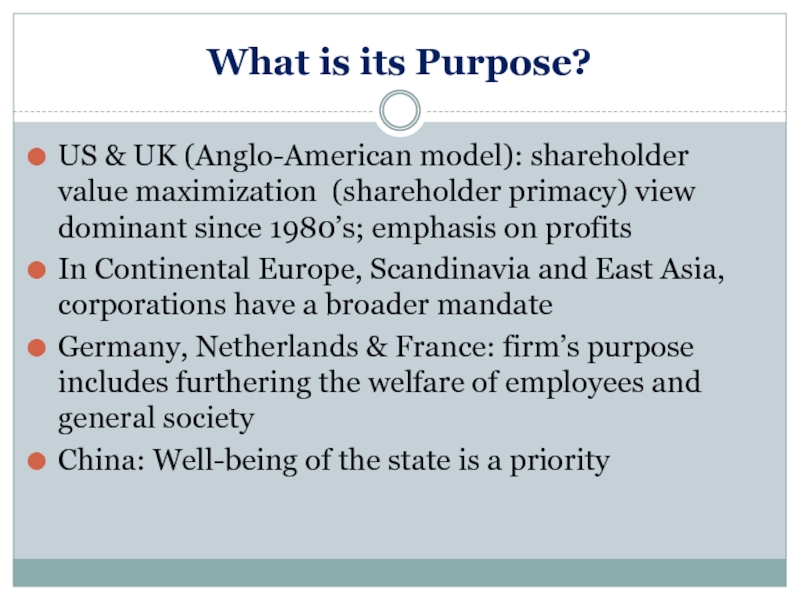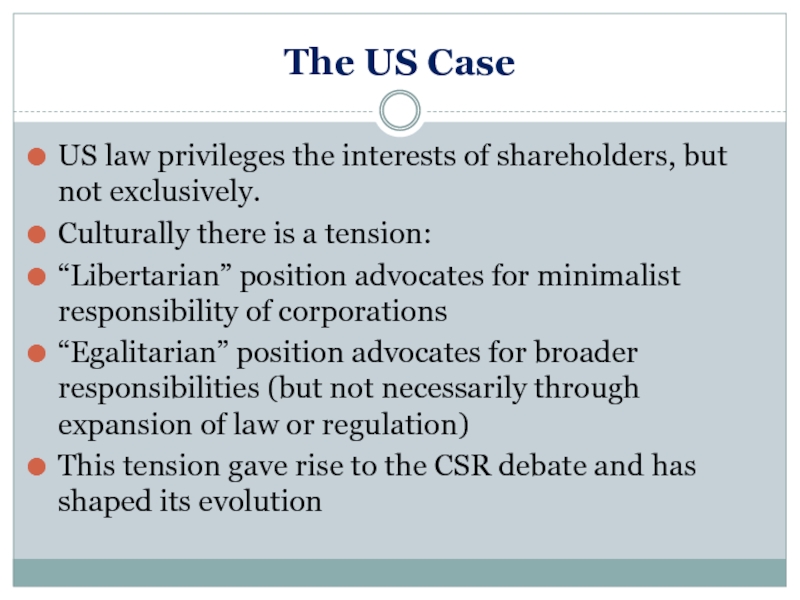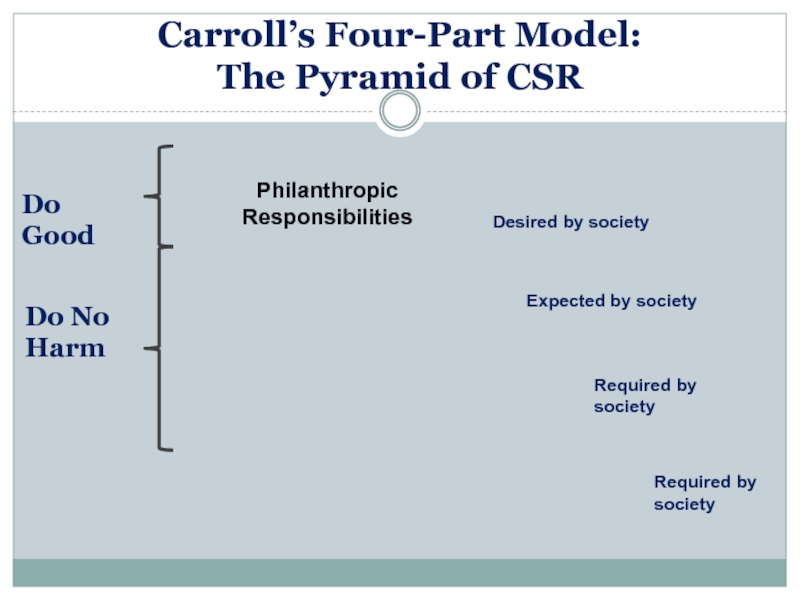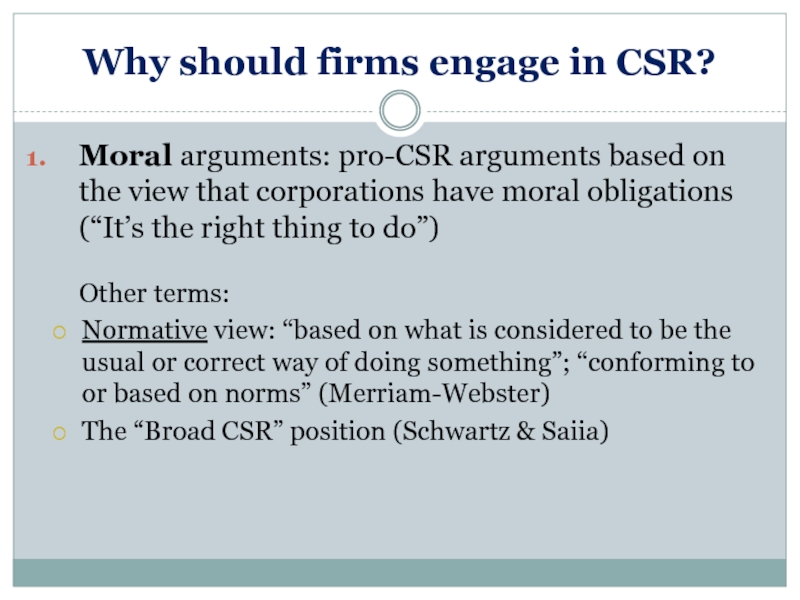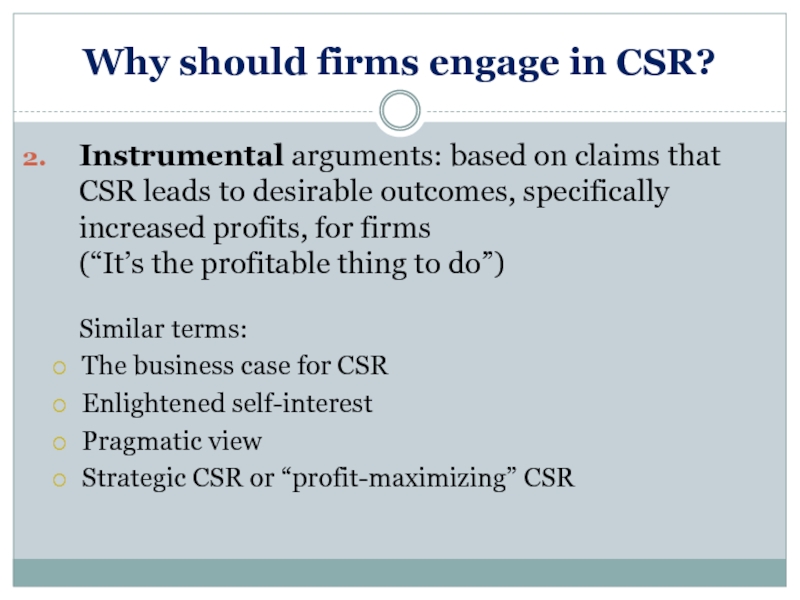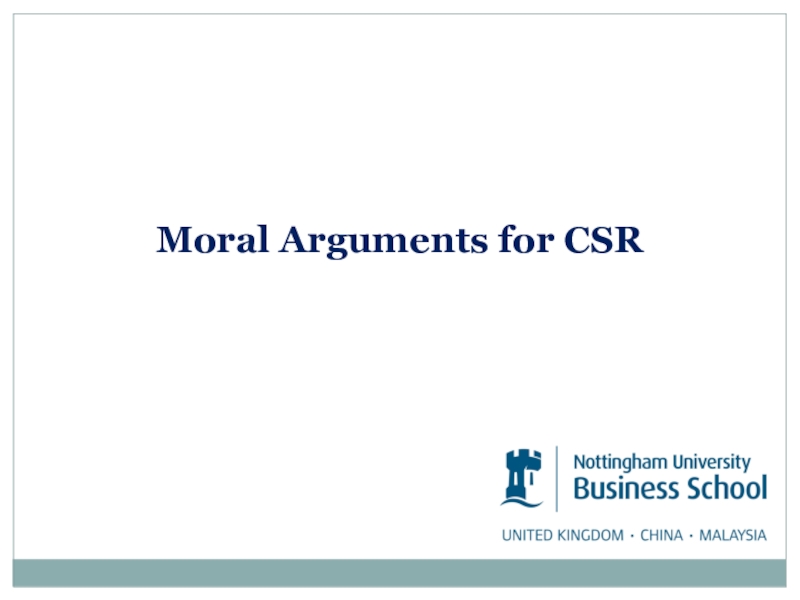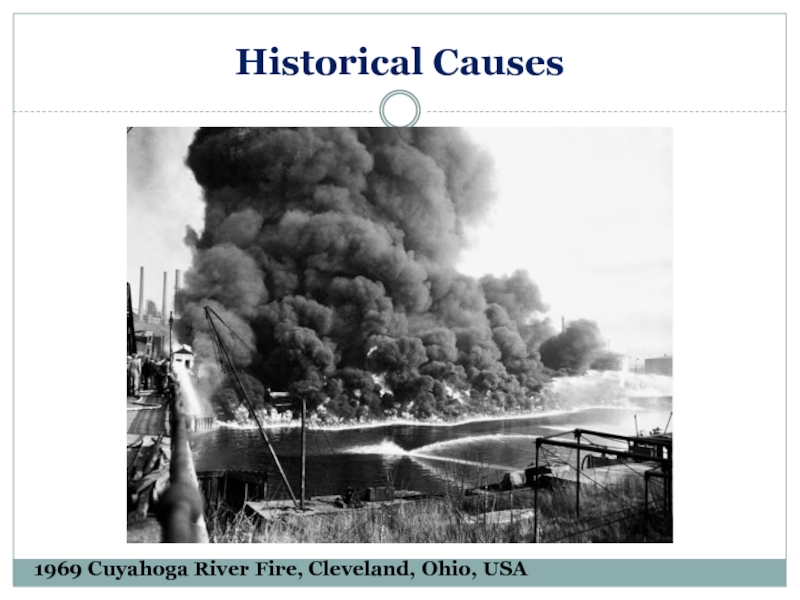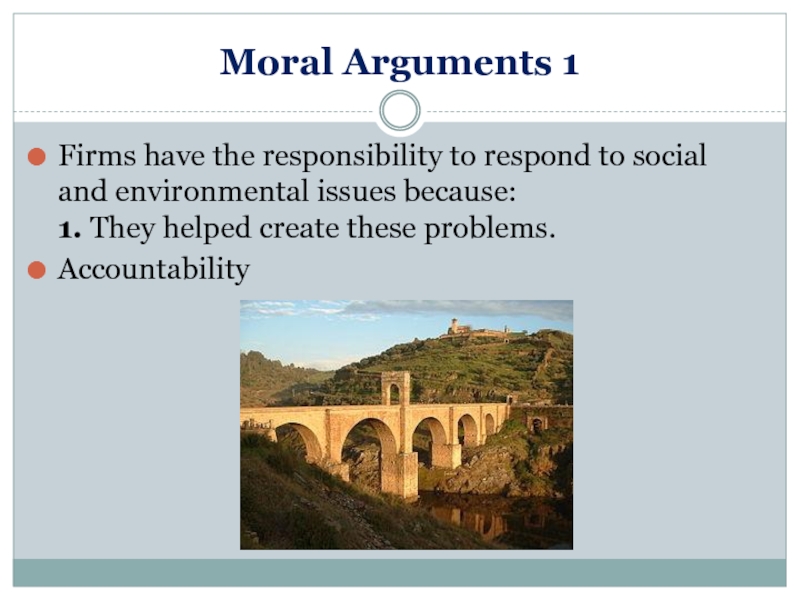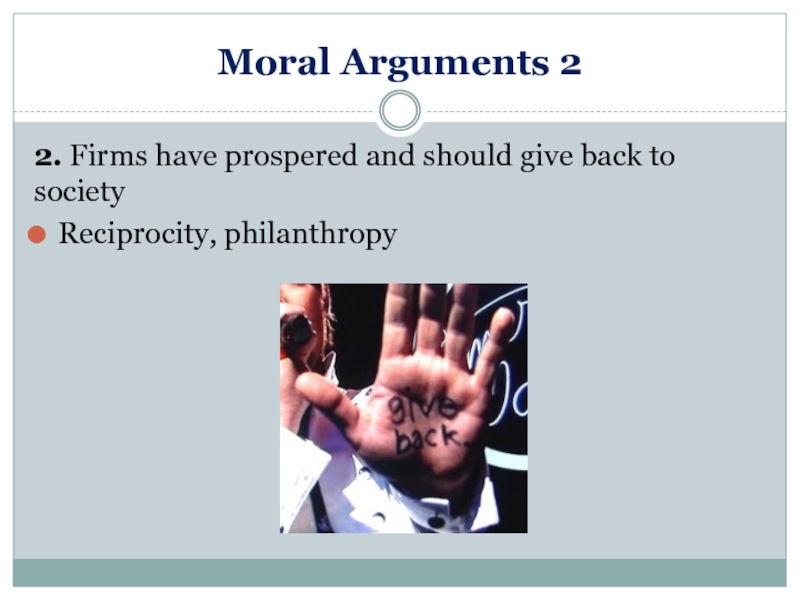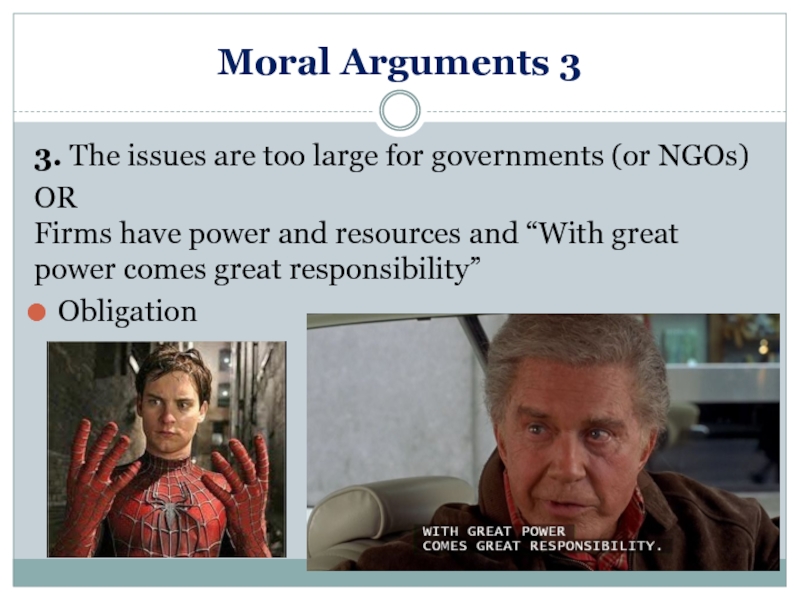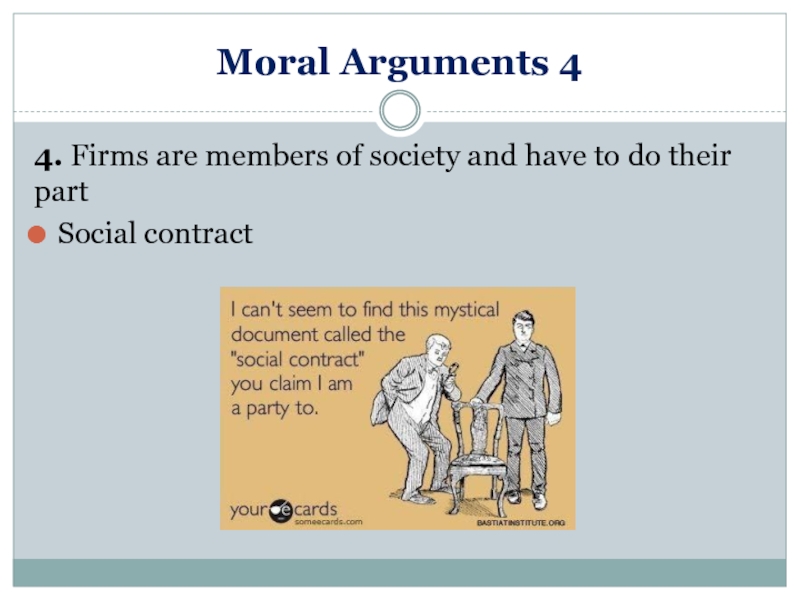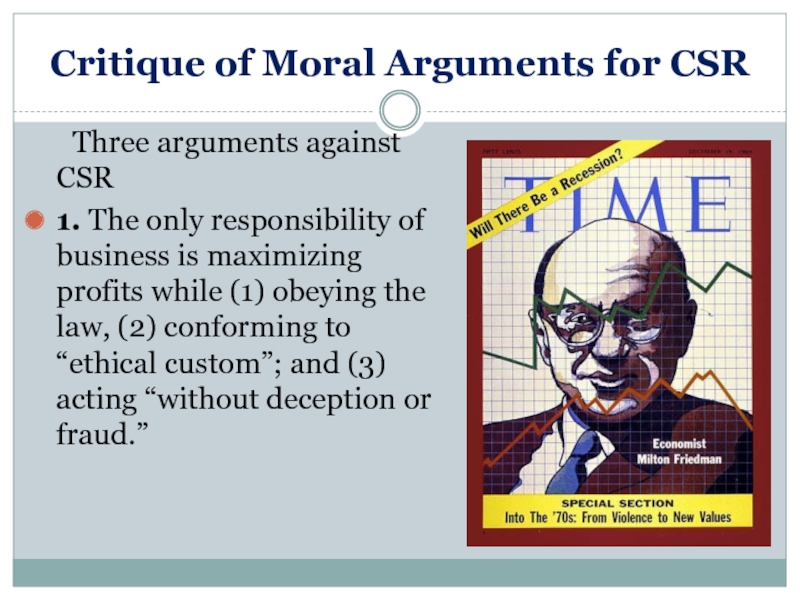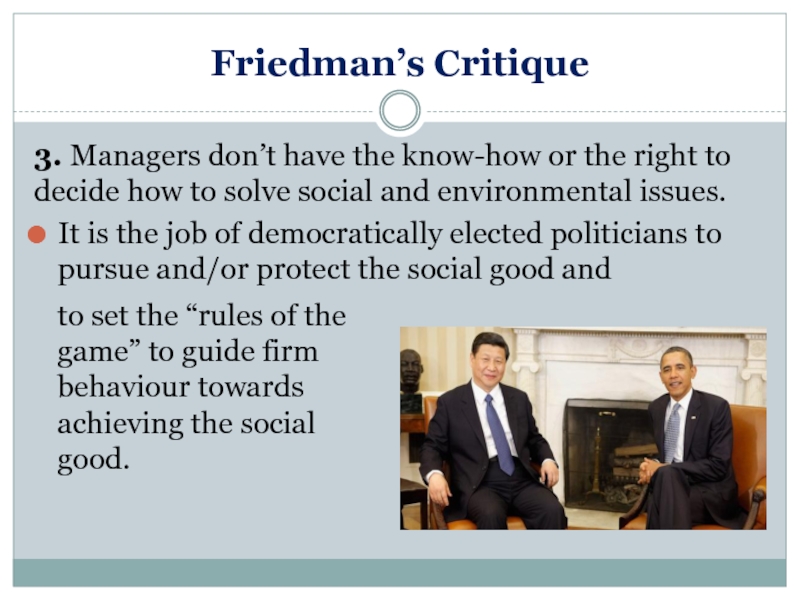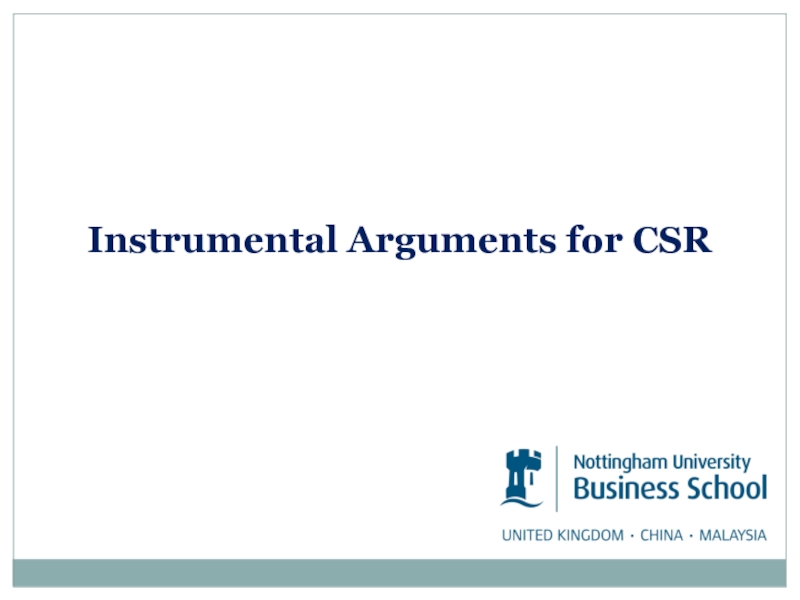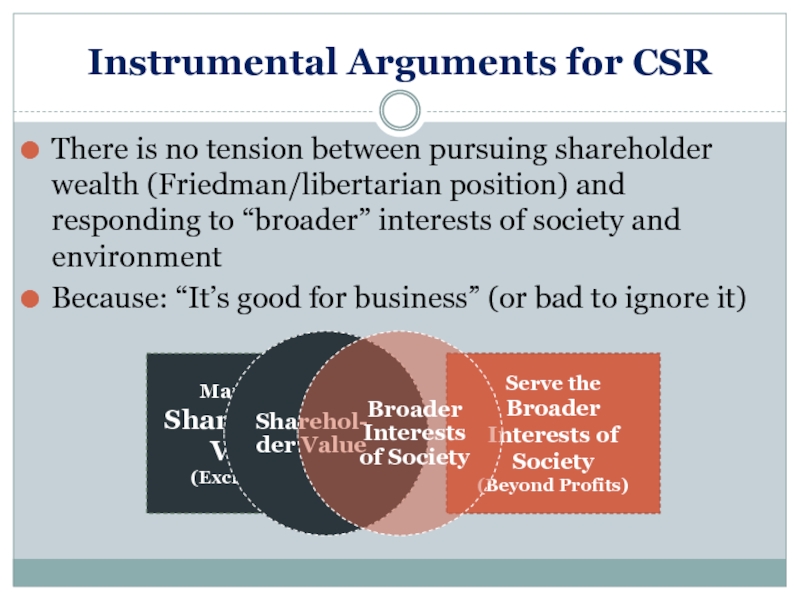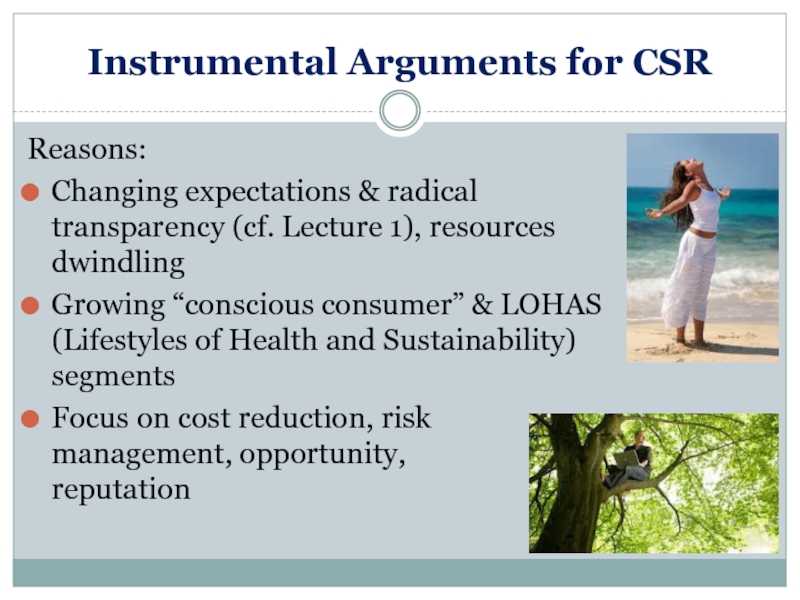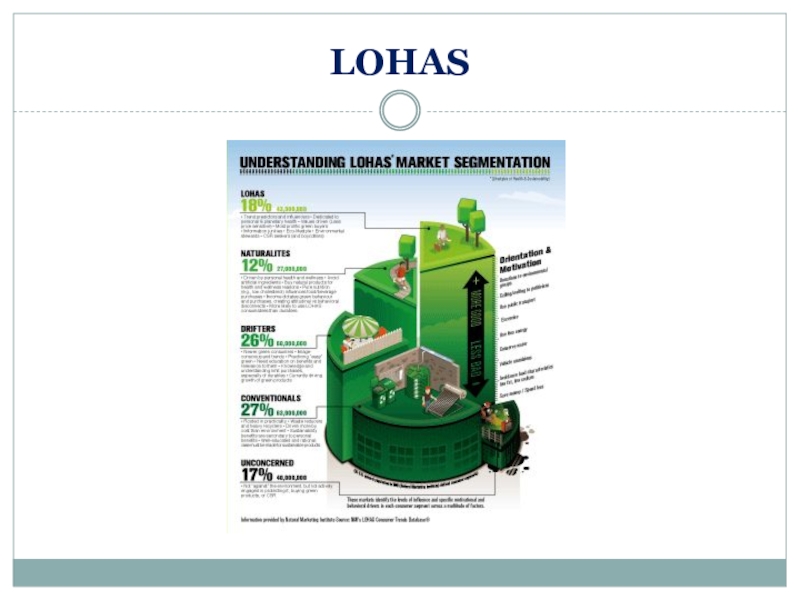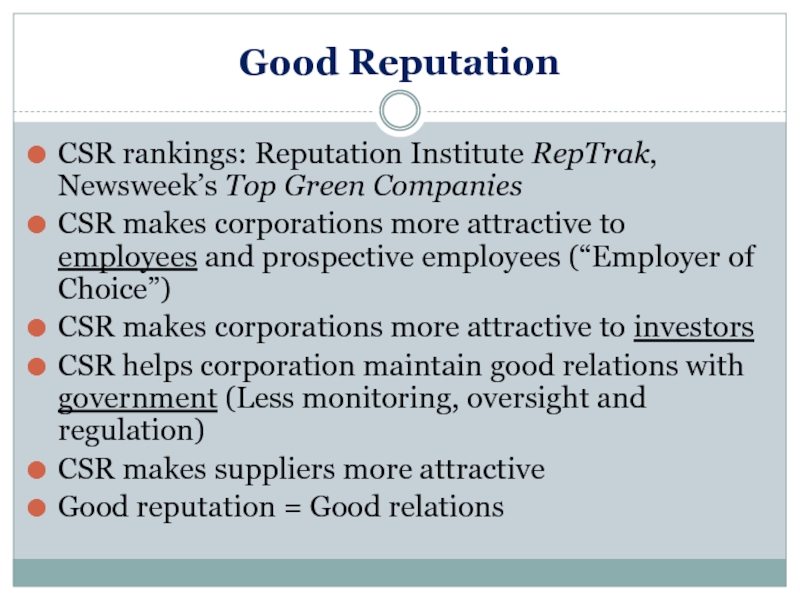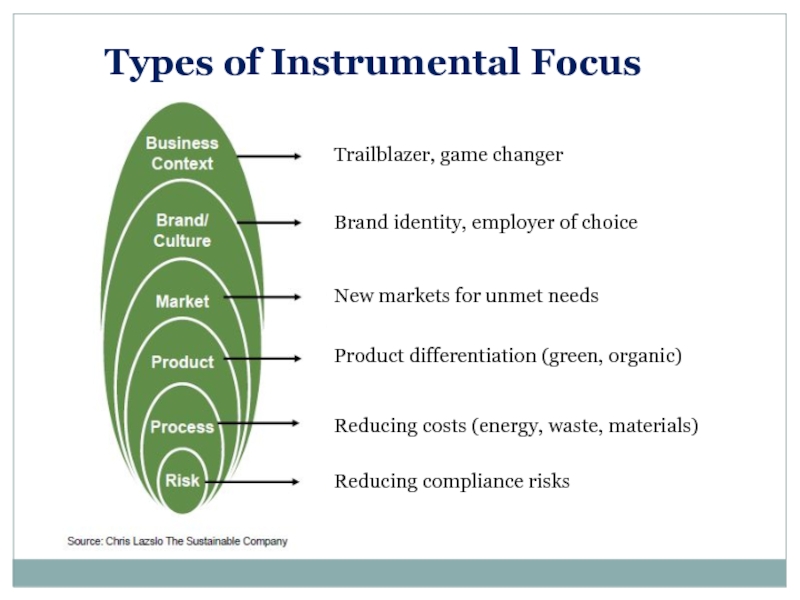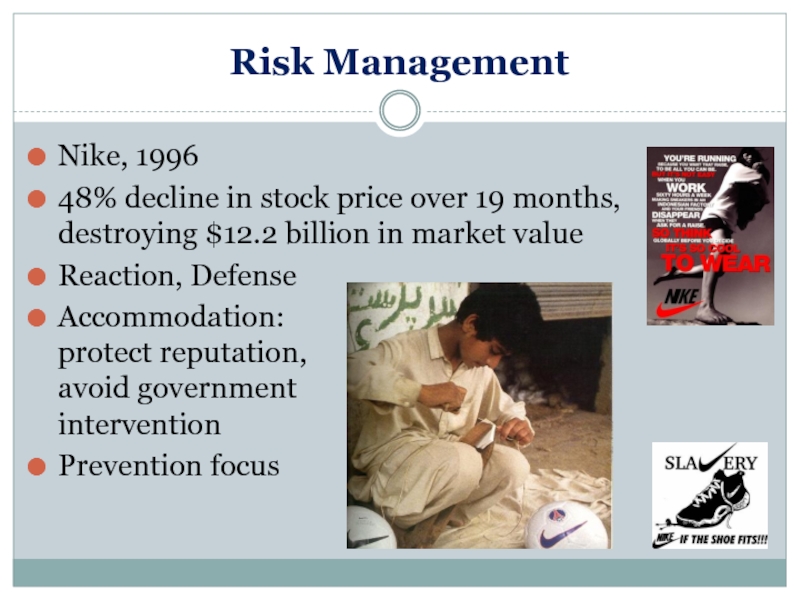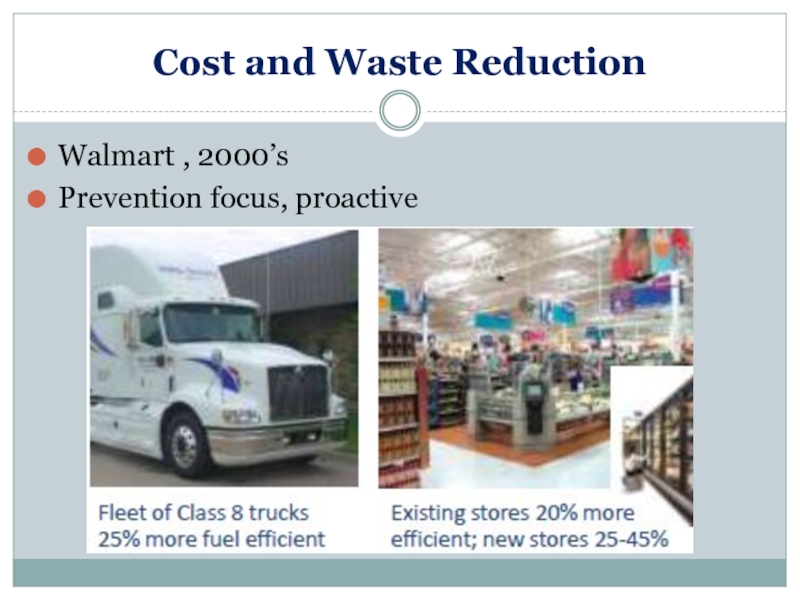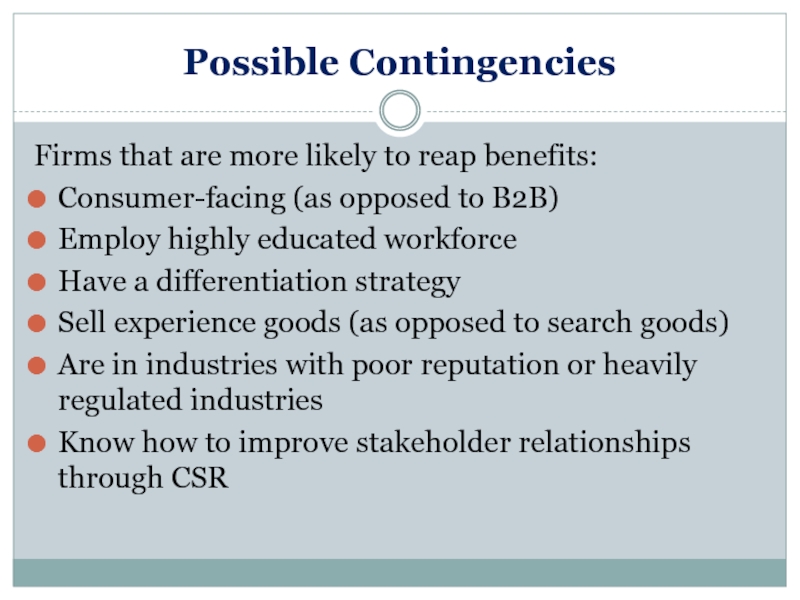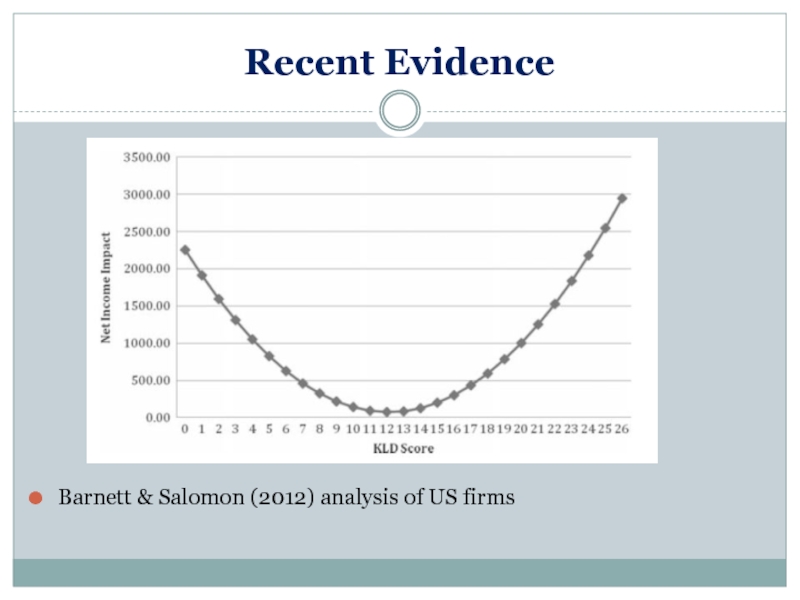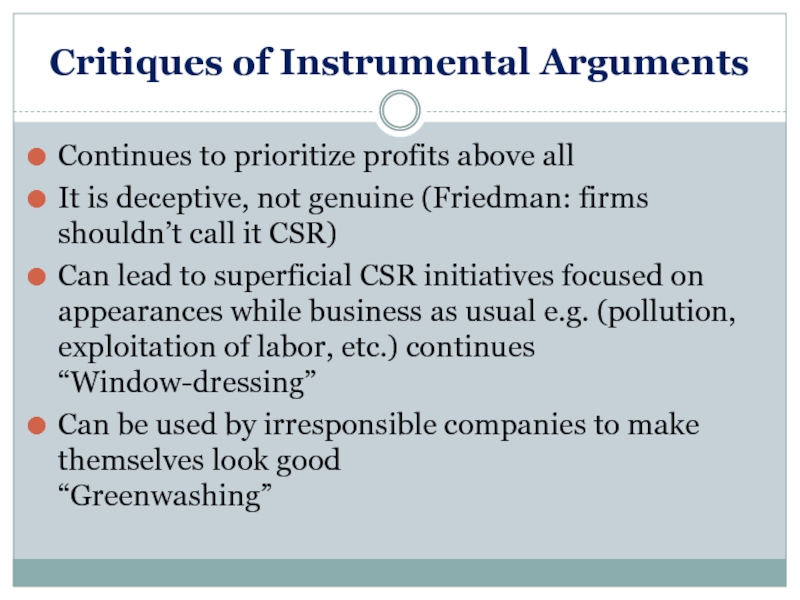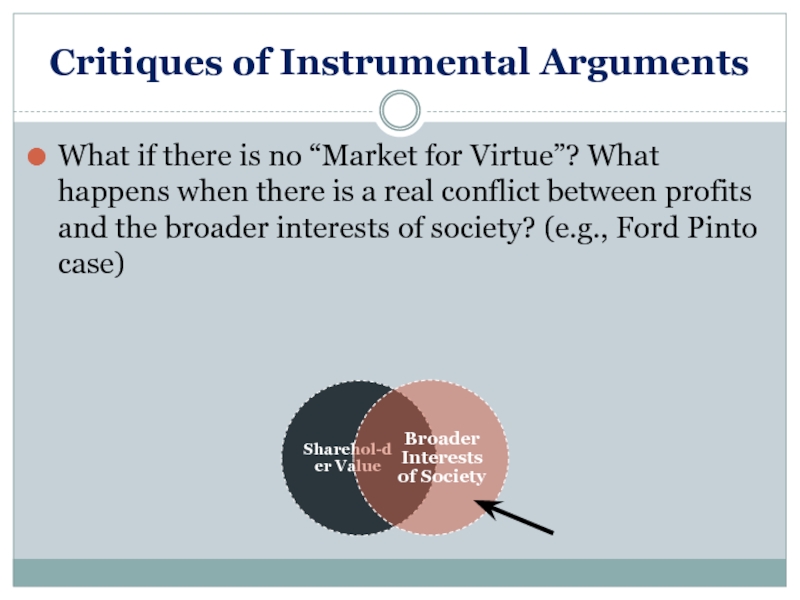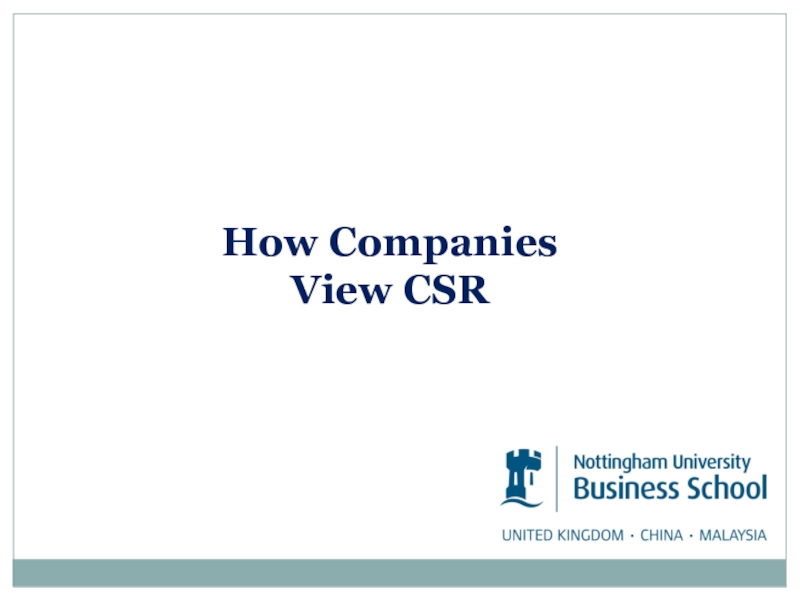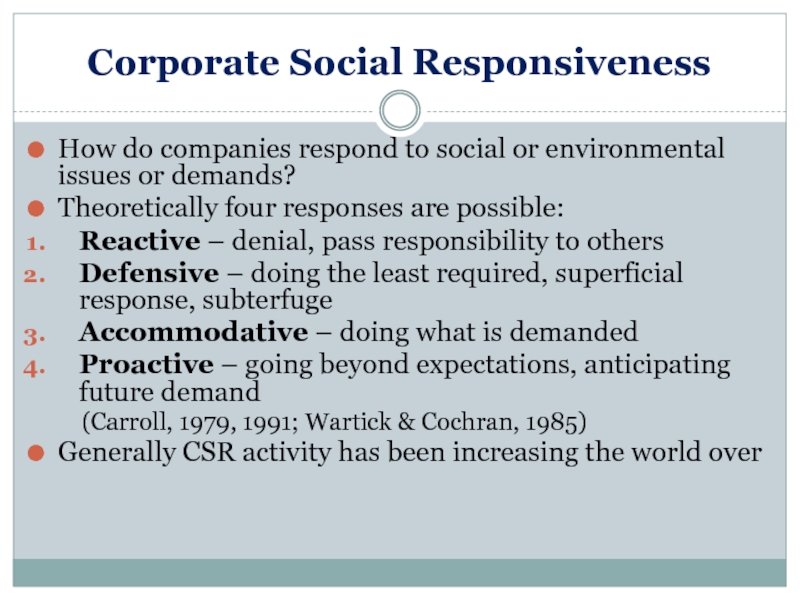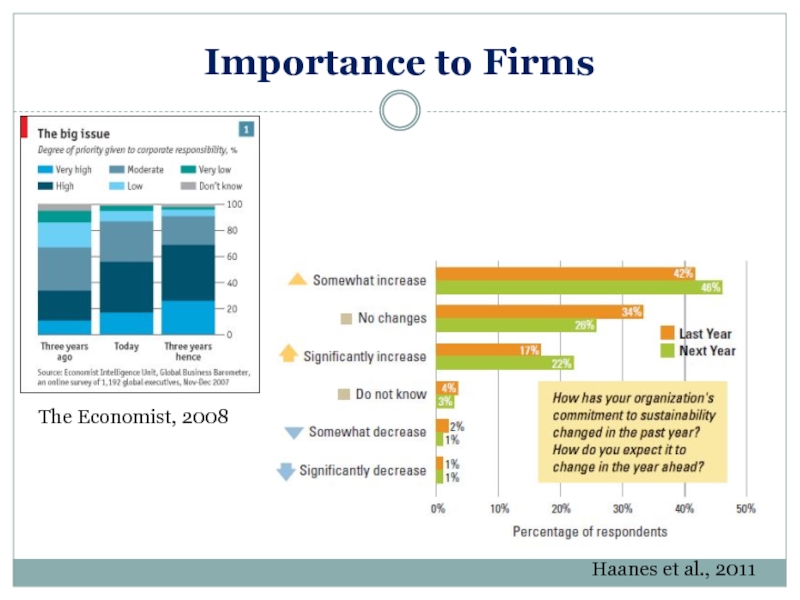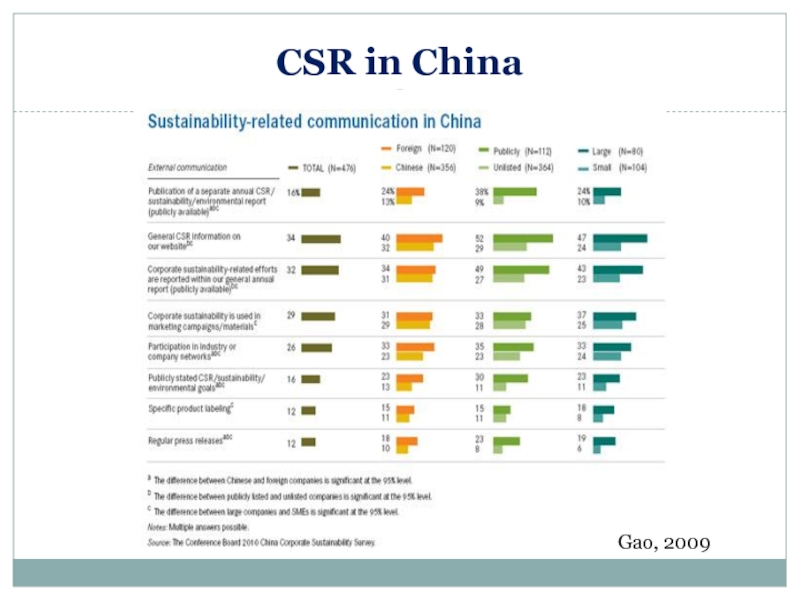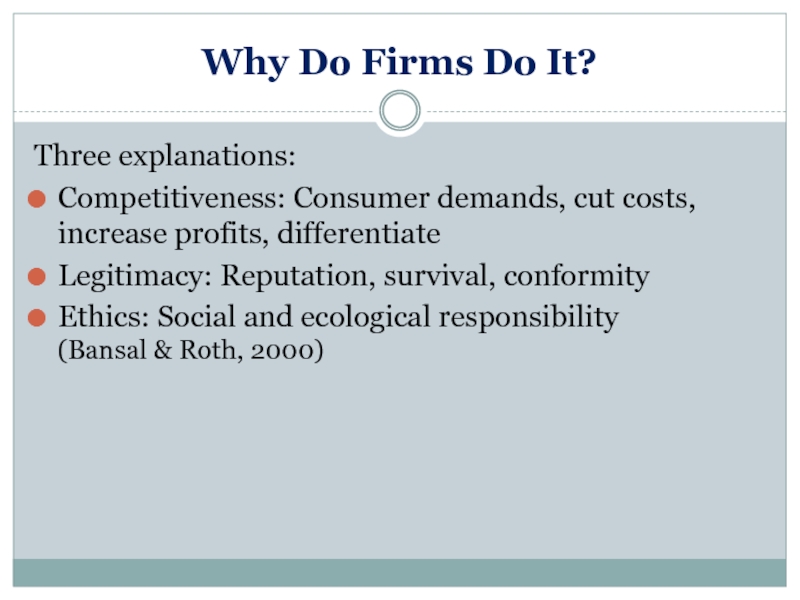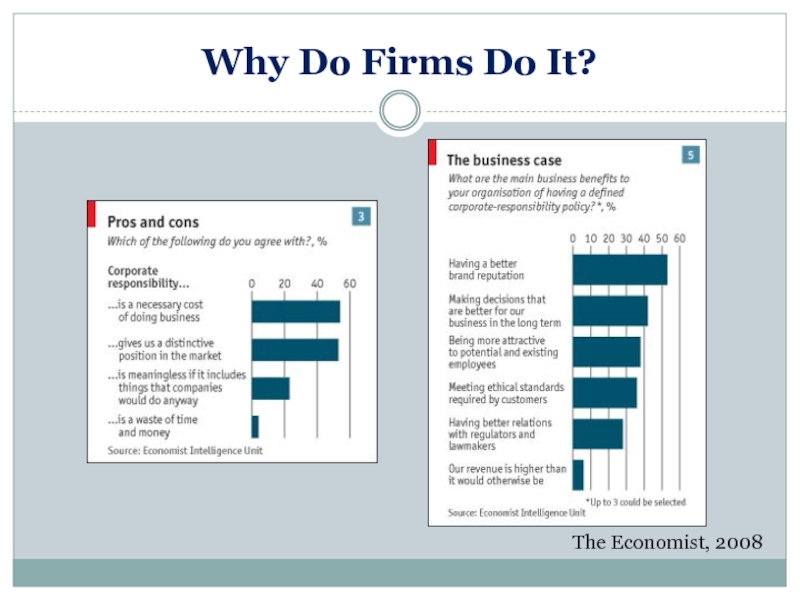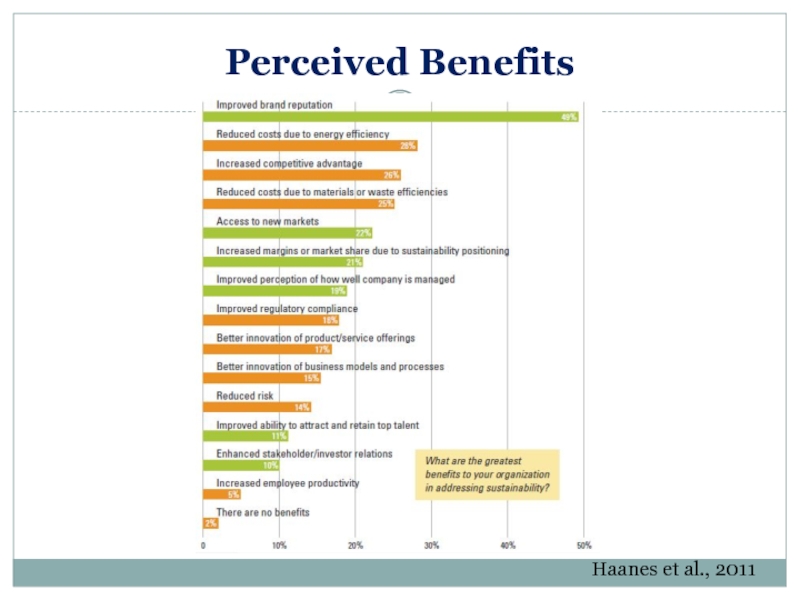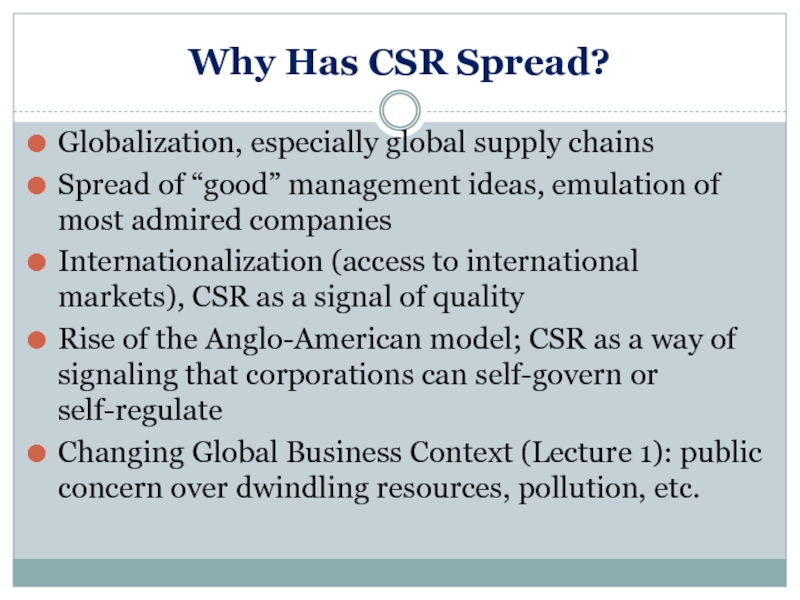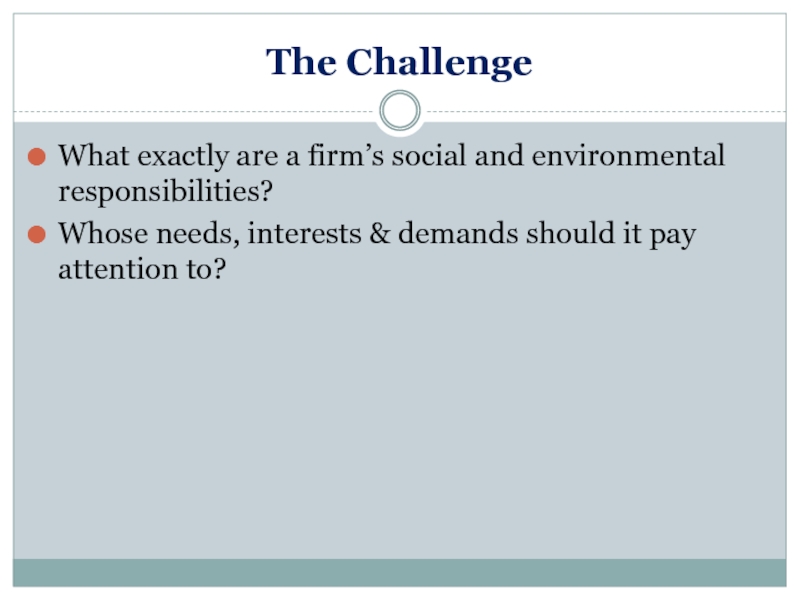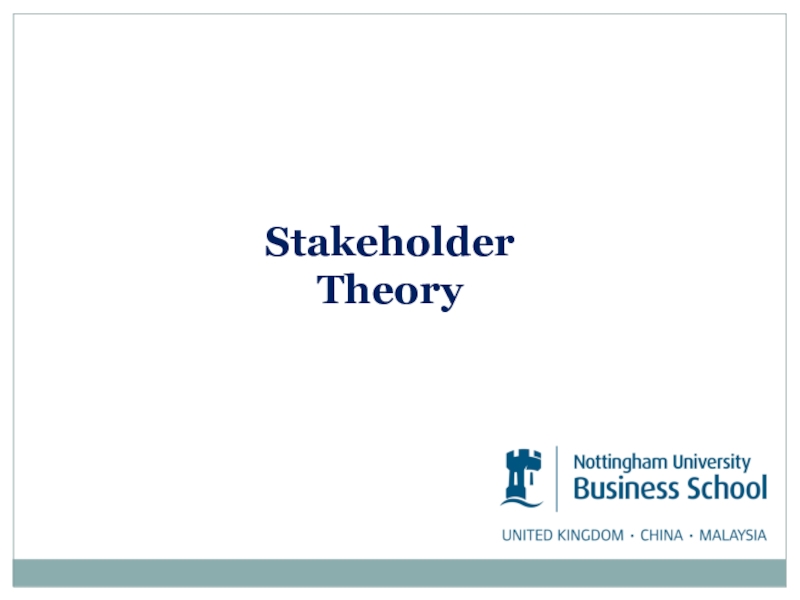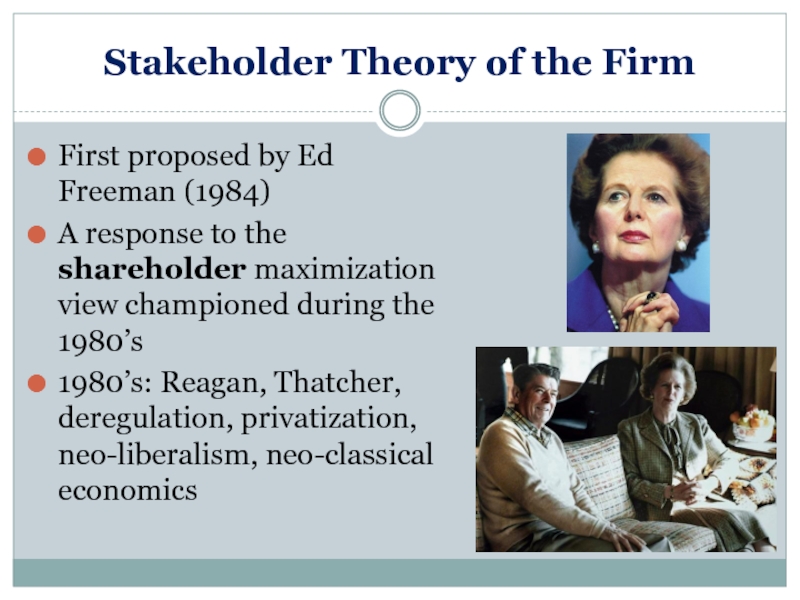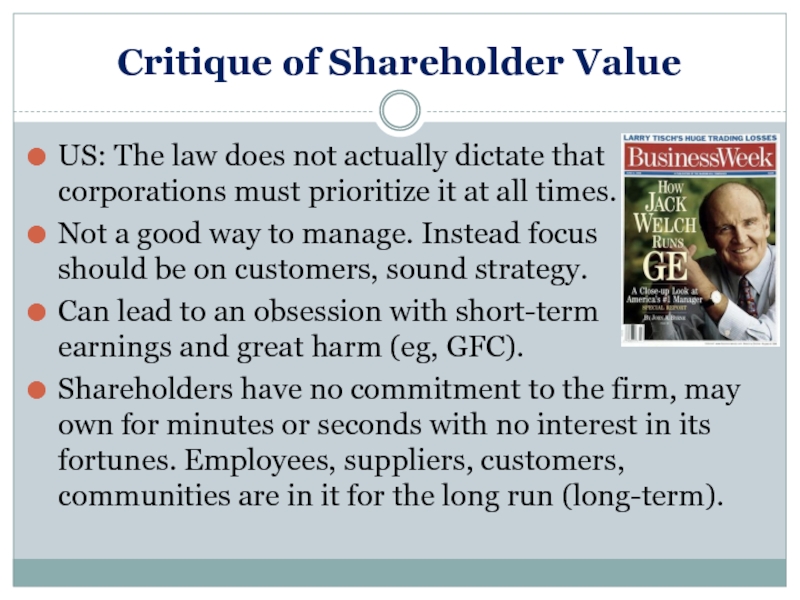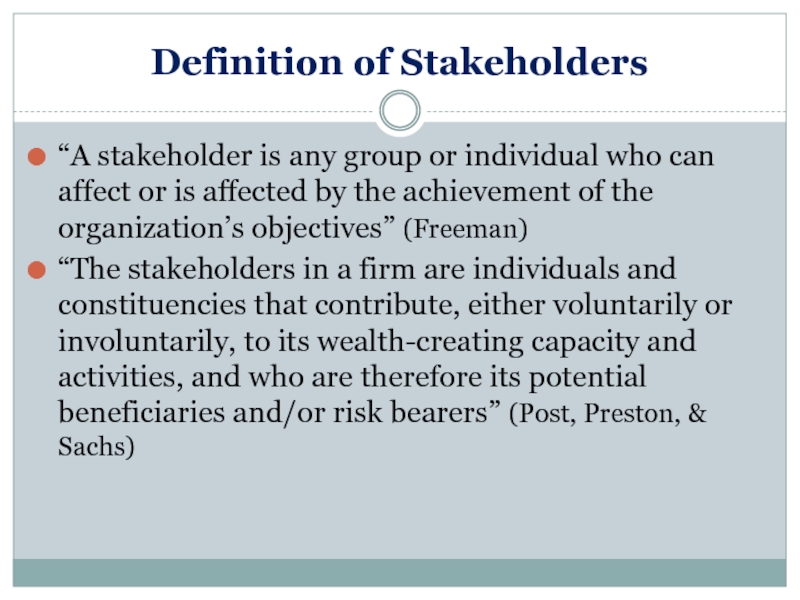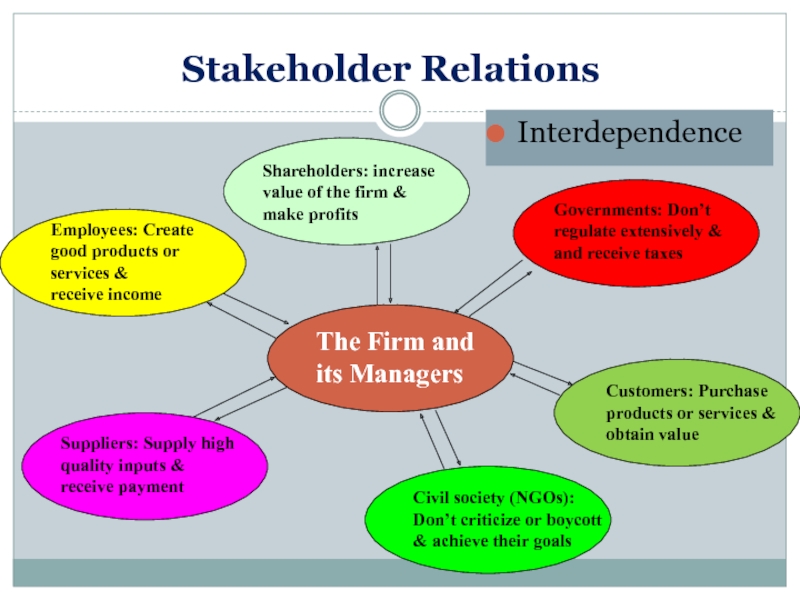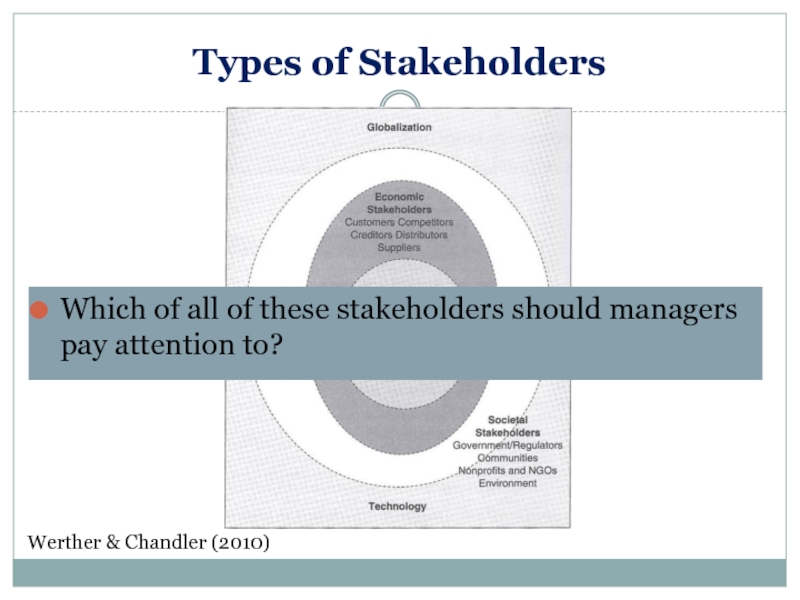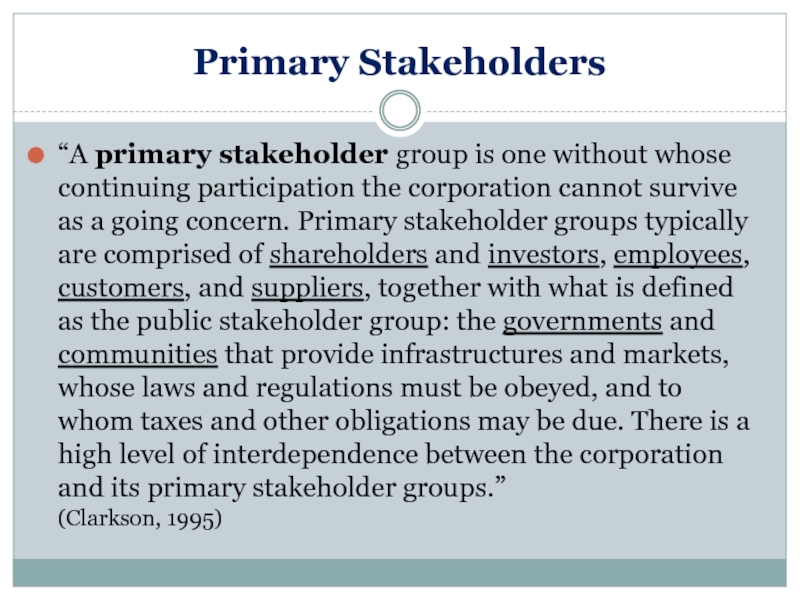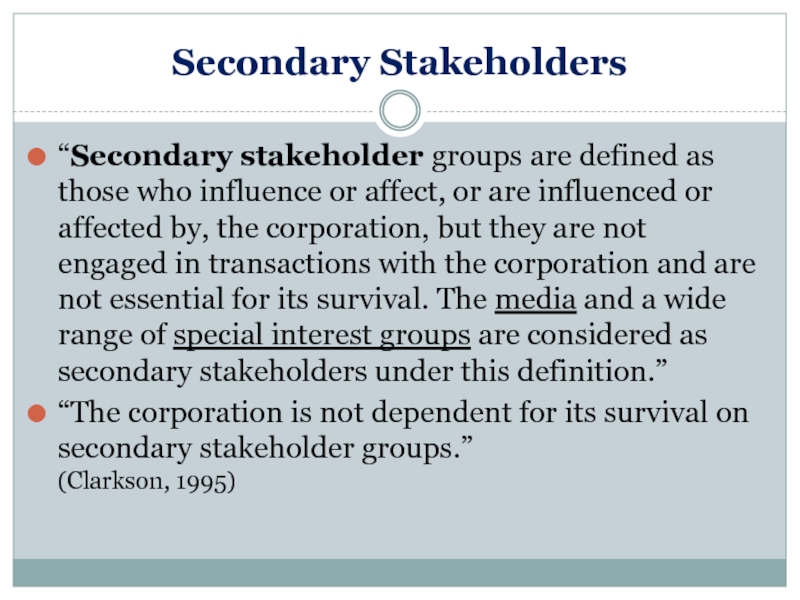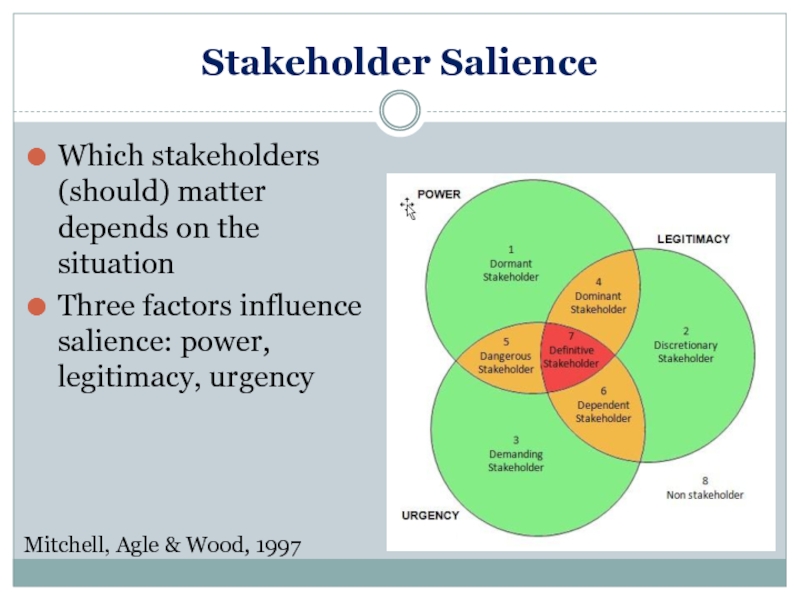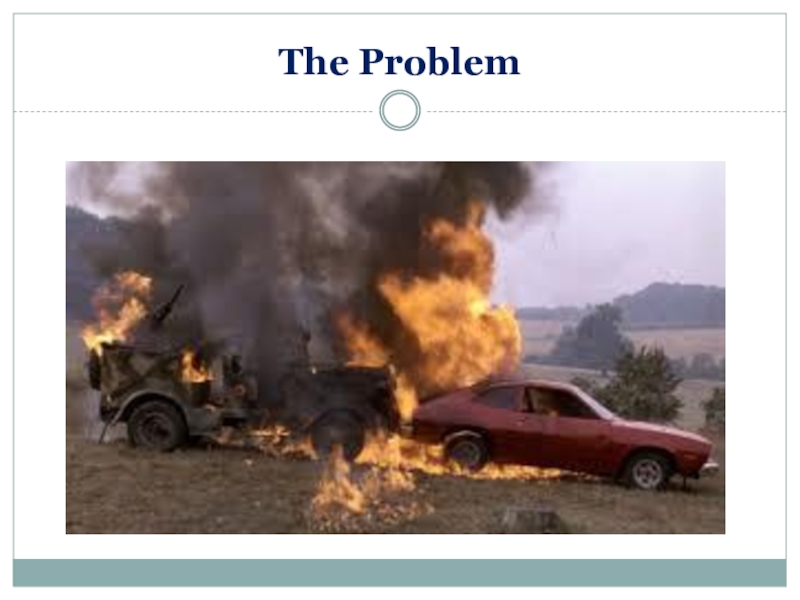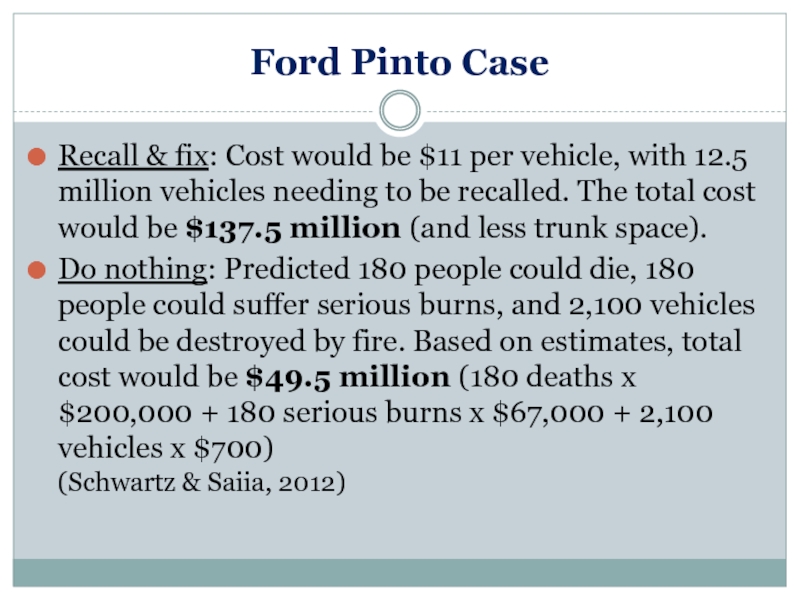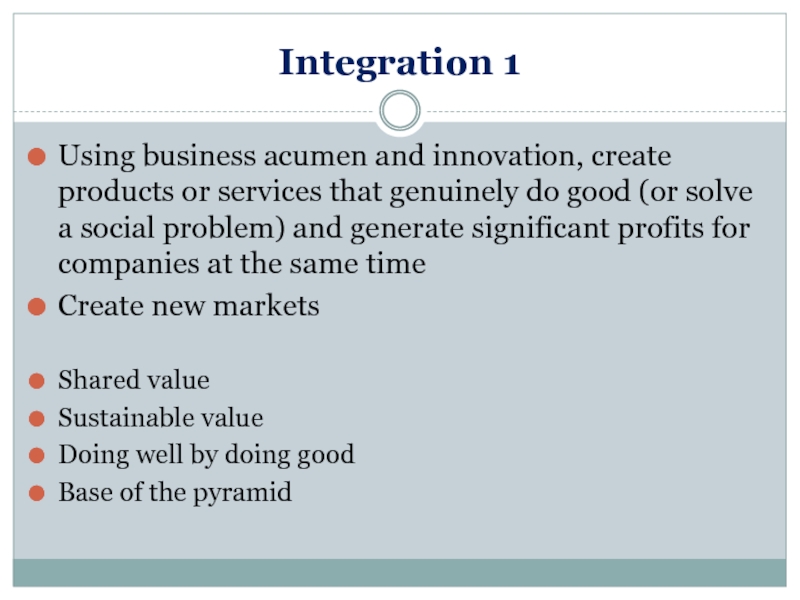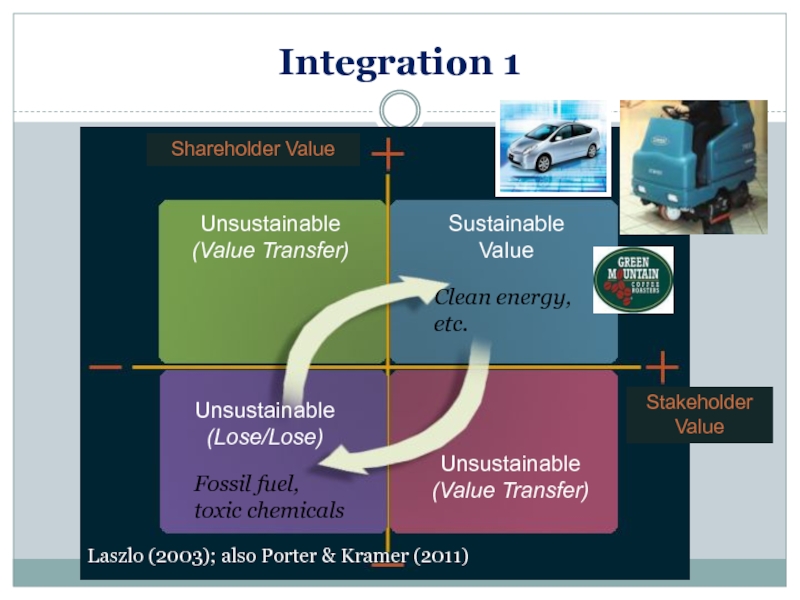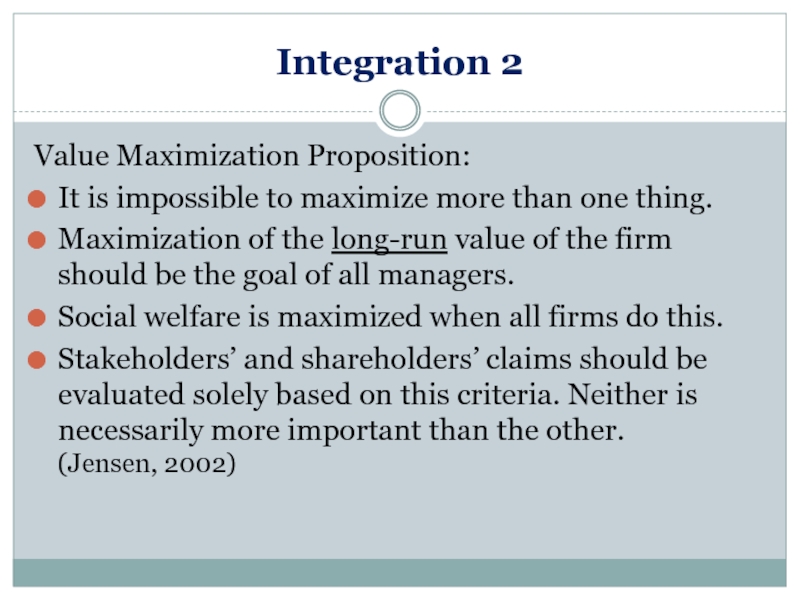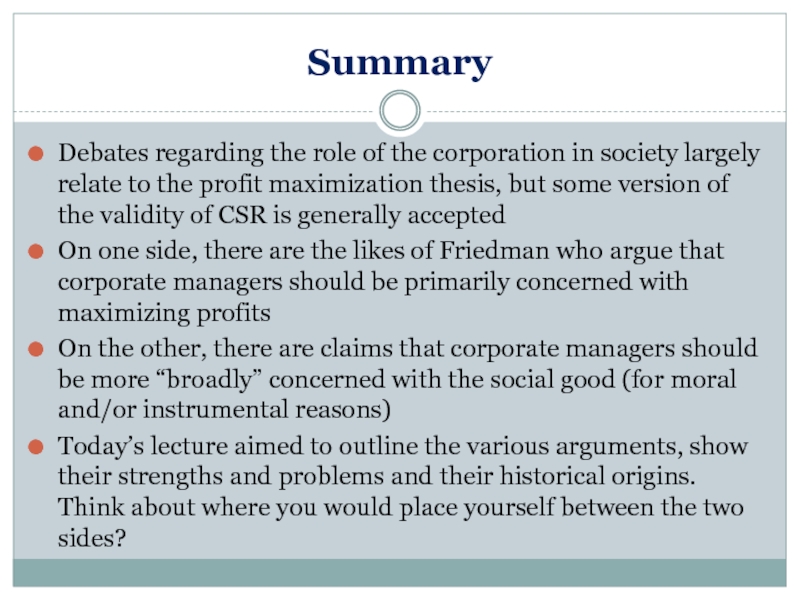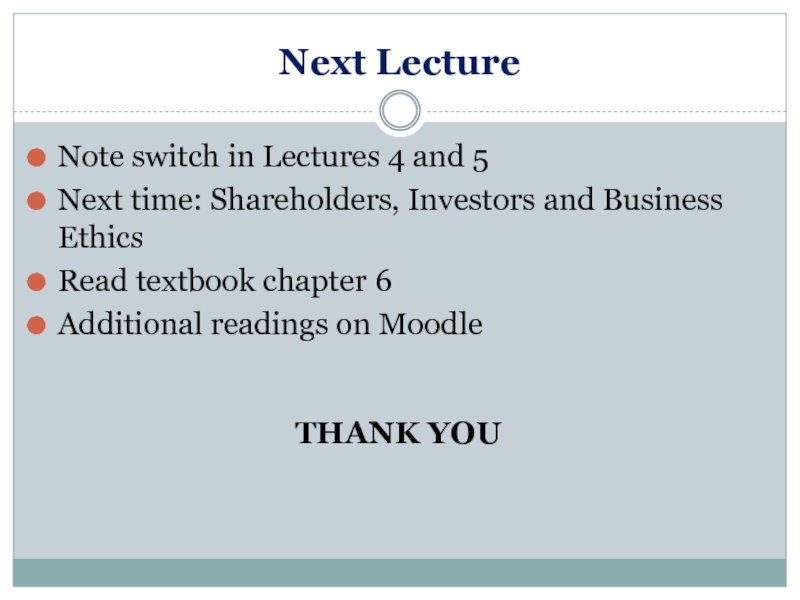- Главная
- Разное
- Дизайн
- Бизнес и предпринимательство
- Аналитика
- Образование
- Развлечения
- Красота и здоровье
- Финансы
- Государство
- Путешествия
- Спорт
- Недвижимость
- Армия
- Графика
- Культурология
- Еда и кулинария
- Лингвистика
- Английский язык
- Астрономия
- Алгебра
- Биология
- География
- Детские презентации
- Информатика
- История
- Литература
- Маркетинг
- Математика
- Медицина
- Менеджмент
- Музыка
- МХК
- Немецкий язык
- ОБЖ
- Обществознание
- Окружающий мир
- Педагогика
- Русский язык
- Технология
- Физика
- Философия
- Химия
- Шаблоны, картинки для презентаций
- Экология
- Экономика
- Юриспруденция
The role of the corporation презентация
Содержание
- 1. The role of the corporation
- 2. The Role of the Corporation
- 3. The Debate over CSR This question was
- 4. The Debate over CSR Today From a
- 5. The Debate over CSR Today World-wide diffusion:
- 6. Corporate Social Responsibility What is CSR? How
- 7. Definitions Corporate social responsibility: “The firm’s consideration
- 8. Corporate Social Responsibility Five key elements Corporations
- 9. Early Conceptualization The social responsibility of business
- 10. A legal entity - an “artificial” rather
- 11. What is its Purpose? Should it exclusively
- 12. What is its Purpose? US & UK
- 13. The US Case US law privileges the
- 14. Carroll’s Four-Part Model: The Pyramid of
- 15. Why should firms engage in CSR? Moral
- 16. Why should firms engage in CSR? Instrumental
- 17. Moral Arguments for CSR
- 18. Historical Causes 1969 Cuyahoga River Fire, Cleveland, Ohio, USA
- 19. Birth of the U.S. Environmental Movement 1970’s
- 20. A Polluted River
- 21. Moral Arguments for CSR “It’s the right
- 22. Moral Arguments 1 Firms have the responsibility
- 23. Moral Arguments 2 2. Firms have prospered and should give back to society Reciprocity, philanthropy
- 24. Moral Arguments 3 3. The issues are
- 25. The Power of Corporations “The sheer magnitude
- 26. Moral Arguments 4 4. Firms are members
- 27. Who is Responsible? Are moral arguments directed
- 28. Critique of Moral Arguments for CSR Three
- 29. Friedman’s Critique 2. Managers (agents) are employed
- 30. Friedman’s Critique 3. Managers don’t have the
- 31. Instrumental Arguments for CSR
- 32. Instrumental Arguments for CSR There is no
- 33. Instrumental Arguments for CSR Reasons: Changing
- 34. LOHAS
- 35. LOHAS in China “17% of consumers in
- 36. Good Reputation CSR rankings: Reputation Institute RepTrak,
- 37. Trailblazer, game changer Brand identity, employer of
- 38. Risk Management Nike, 1996 48% decline in
- 39. Walmart , 2000’s Prevention focus, proactive Cost and Waste Reduction
- 40. Nike vs. Adidas, 2008 Promotion focus, proactive Strategic CSR Differentiation
- 41. Game Changers Promotion focus, proactive Strategic CSR Tennant Company Toyota Prius
- 42. Does CSR increase firm financial performance? A
- 43. Possible Contingencies Firms that are more likely
- 44. Recent Evidence Barnett & Salomon (2012) analysis of US firms
- 45. Critiques of Instrumental Arguments Continues to prioritize
- 46. Critiques of Instrumental Arguments What if there
- 47. How Companies View CSR
- 48. Corporate Social Responsiveness How do companies respond
- 49. Importance to Firms Haanes et al., 2011 The Economist, 2008
- 50. CSR in China Gao, 2009
- 51. Why Do Firms Do It? Three explanations:
- 52. Why Do Firms Do It? The Economist, 2008
- 53. Perceived Benefits Haanes et al., 2011
- 54. Why Has CSR Spread? Globalization, especially global
- 55. The Challenge What exactly are a firm’s
- 56. Stakeholder Theory
- 57. Stakeholder Theory of the Firm First proposed
- 58. Critique of Shareholder Value US: The law
- 59. Definition of Stakeholders “A stakeholder is any
- 60. Stakeholder Relations The Firm and its
- 61. Types of Stakeholders Werther & Chandler (2010)
- 62. Stakeholder Analysis The process of identifying stakeholders and determining which are the most important.
- 63. Primary Stakeholders “A primary stakeholder group is
- 64. Secondary Stakeholders “Secondary stakeholder groups are defined
- 65. Stakeholder Salience Which stakeholders (should) matter depends
- 66. Ford Pinto
- 67. The Problem
- 68. Ford Pinto Case Recall & fix: Cost
- 69. Discussion Consider the Fort Pinto case Who
- 70. Integration 1 Using business acumen and innovation,
- 71. Stakeholder Value Shareholder Value Unsustainable (Value
- 72. Integration 2 Value Maximization Proposition: It is
- 73. Summary Debates regarding the role of the
- 74. Next Lecture Note switch in Lectures 4
Слайд 3The Debate over CSR
This question was hotly debated for decades.
The Economist
What is the corporation’s purpose and what are its responsibilities?
Maximize Shareholder Value
(Exclusively)
Serve the
Broader Interests of Society
(Beyond Profits)
Vs.
Слайд 4The Debate over CSR Today
From a dichotomy to a continuum.
The
What is the corporation’s purpose and what are its responsibilities?
Maximize Shareholder Value
(Exclusively)
Serve the
Broader Interests of Society
(Beyond Profits)
Слайд 5The Debate over CSR Today
World-wide diffusion: From a mostly US-based debate
Chinese government/CPC signals importance of CSR beginning in 2006.
Largest SOEs encouraged to publish annual SOE reports since 2008.
Shanghai and Shenzhen stock exchanges make it mandatory for some firms.
Слайд 6Corporate Social Responsibility
What is CSR?
How has the concept evolved over time?
How
Why do companies engage in it?
Слайд 7Definitions
Corporate social responsibility:
“The firm’s consideration of, and response to, issues beyond
“Actions that appear to further some social good, beyond the interests of the firm and that which is required by law.” (McWilliam & Siegel, 2001)
“Includes the economic, legal, ethical and philanthropic expectations placed on organizations by society at a given point in time.” (Carroll & Buchholtz, 2009)
Слайд 8Corporate Social Responsibility
Five key elements
Corporations have responsibilities that go beyond the
These responsibilities involve helping to solve important social problems, especially those they have helped create.
Corporations have a broader constituency than stockholders alone.
Corporations have impacts that go beyond simple marketplace transactions.
Corporations serve a wider range of human values than can be captured by a sole focus on economic values. (Buchholtz, 1991)
Слайд 9Early Conceptualization
The social responsibility of business
“refers to the obligations of
Focus on business and businessmen
Emphasis on philanthropy and community relations
Focus on social responsibility of the firm (corporation) emerges about 1967 in the US
Слайд 10A legal entity - an “artificial” rather than “natural” person –
Owned by shareholders (e.g., in England, the US, and Australia). Can be publicly traded or privately held.
Often managed by “agents” (managers) who have a fiduciary duty to fulfil the goals and mission given them by its “principals” (owners).
What is a Corporation?
Слайд 11What is its Purpose?
Should it exclusively focus on maximizing profits?
Or be
Depends on the country: different national business systems (which include legal systems and national cultural values) provide different answers
Слайд 12What is its Purpose?
US & UK (Anglo-American model): shareholder value maximization
In Continental Europe, Scandinavia and East Asia, corporations have a broader mandate
Germany, Netherlands & France: firm’s purpose includes furthering the welfare of employees and general society
China: Well-being of the state is a priority
Слайд 13The US Case
US law privileges the interests of shareholders, but not
Culturally there is a tension:
“Libertarian” position advocates for minimalist responsibility of corporations
“Egalitarian” position advocates for broader responsibilities (but not necessarily through expansion of law or regulation)
This tension gave rise to the CSR debate and has shaped its evolution
Слайд 14Carroll’s Four-Part Model:
The Pyramid of CSR
Philanthropic Responsibilities
Expected by society
Do Good
Do
Слайд 15Why should firms engage in CSR?
Moral arguments: pro-CSR arguments based on
Normative view: “based on what is considered to be the usual or correct way of doing something”; “conforming to or based on norms” (Merriam-Webster)
The “Broad CSR” position (Schwartz & Saiia)
Слайд 16Why should firms engage in CSR?
Instrumental arguments: based on claims that
The business case for CSR
Enlightened self-interest
Pragmatic view
Strategic CSR or “profit-maximizing” CSR
Слайд 19Birth of the U.S. Environmental Movement
1970’s - Consequences of the modern
New legislation (Clean Water Act)
New governmental agency: Environmental Protection Agency (EPA)
New expectations of firms
Public concern gave impetus to CSR movement
Similar phenomenon in many industrialized or industrializing countries in intervening years
Слайд 21Moral Arguments for CSR
“It’s the right thing to do”
Focus on responsibility,
Driven by growing concern over dwindling natural resources and environmental degradation: Pollution, water contamination, over-population, deforestation, climate change, etc.
And concern over social issues: Poverty, inequality, slavery, forced labor, starvation, health, human rights
Слайд 22Moral Arguments 1
Firms have the responsibility to respond to social and
Accountability
Слайд 23Moral Arguments 2
2. Firms have prospered and should give back to
Reciprocity, philanthropy
Слайд 24Moral Arguments 3
3. The issues are too large for governments (or
OR Firms have power and resources and “With great power comes great responsibility”
Obligation
Слайд 25The Power of Corporations
“The sheer magnitude of problems, from malnutrition and
Слайд 27Who is Responsible?
Are moral arguments directed toward all firms equally?
No.
Generally the focus is on larger, more “visible” (high profile), more prosperous and multinational corporations.
Also on firms or industries that are seen to do more damage (oil industry, Walmart, etc.)
Слайд 28Critique of Moral Arguments for CSR
Three arguments against CSR
1. The only
Слайд 29Friedman’s Critique
2. Managers (agents) are employed by shareholders (principals) and have
Managers who engage in CSR are illicitly spending the money of shareholders (or imposing a “tax”)
Слайд 30Friedman’s Critique
3. Managers don’t have the know-how or the right to
It is the job of democratically elected politicians to pursue and/or protect the social good and
to set the “rules of the game” to guide firm behaviour towards achieving the social good.
Слайд 32Instrumental Arguments for CSR
There is no tension between pursuing shareholder wealth
Because: “It’s good for business” (or bad to ignore it)
Maximize Shareholder Value
(Exclusively)
Serve the
Broader Interests of Society
(Beyond Profits)
Слайд 33Instrumental Arguments for CSR
Reasons:
Changing expectations & radical transparency (cf. Lecture
Growing “conscious consumer” & LOHAS (Lifestyles of Health and Sustainability) segments
Focus on cost reduction, risk management, opportunity, reputation
Слайд 35LOHAS in China
“17% of consumers in China’s top five cities –
“And China’s LOHAS consumers are not price sensitive – nine out of ten consumers would be willing to pay 20% more on average for sustainable products, and are looking for increased product choices and availability.”
http://blog.lohas.com
Слайд 36Good Reputation
CSR rankings: Reputation Institute RepTrak, Newsweek’s Top Green Companies
CSR makes corporations more attractive to employees and prospective employees (“Employer of Choice”)
CSR makes corporations more attractive to investors
CSR helps corporation maintain good relations with government (Less monitoring, oversight and regulation)
CSR makes suppliers more attractive
Good reputation = Good relations
Слайд 37Trailblazer, game changer
Brand identity, employer of choice
New markets for unmet needs
Product differentiation (green, organic)
Reducing costs (energy, waste, materials)
Reducing compliance risks
Types of Instrumental Focus
Слайд 38Risk Management
Nike, 1996
48% decline in stock price over 19 months, destroying
Reaction, Defense
Accommodation: protect reputation, avoid government intervention
Prevention focus
Слайд 42Does CSR increase firm financial performance?
A recent meta-analysis found that:
The overall
Margolis, Walsh & Elfenbein (2007)
Are Instrumental CSR Claims True?
Слайд 43Possible Contingencies
Firms that are more likely to reap benefits:
Consumer-facing (as opposed
Employ highly educated workforce
Have a differentiation strategy
Sell experience goods (as opposed to search goods)
Are in industries with poor reputation or heavily regulated industries
Know how to improve stakeholder relationships through CSR
Слайд 45Critiques of Instrumental Arguments
Continues to prioritize profits above all
It is deceptive,
Can lead to superficial CSR initiatives focused on appearances while business as usual e.g. (pollution, exploitation of labor, etc.) continues “Window-dressing”
Can be used by irresponsible companies to make themselves look good “Greenwashing”
Слайд 46Critiques of Instrumental Arguments
What if there is no “Market for Virtue”?
Слайд 48Corporate Social Responsiveness
How do companies respond to social or environmental issues
Theoretically four responses are possible:
Reactive – denial, pass responsibility to others
Defensive – doing the least required, superficial response, subterfuge
Accommodative – doing what is demanded
Proactive – going beyond expectations, anticipating future demand
(Carroll, 1979, 1991; Wartick & Cochran, 1985)
Generally CSR activity has been increasing the world over
Слайд 51Why Do Firms Do It?
Three explanations:
Competitiveness: Consumer demands, cut costs, increase
Legitimacy: Reputation, survival, conformity
Ethics: Social and ecological responsibility (Bansal & Roth, 2000)
Слайд 54Why Has CSR Spread?
Globalization, especially global supply chains
Spread of “good” management
Internationalization (access to international markets), CSR as a signal of quality
Rise of the Anglo-American model; CSR as a way of signaling that corporations can self-govern or self-regulate
Changing Global Business Context (Lecture 1): public concern over dwindling resources, pollution, etc.
Слайд 55The Challenge
What exactly are a firm’s social and environmental responsibilities?
Whose needs,
Слайд 57Stakeholder Theory of the Firm
First proposed by Ed Freeman (1984)
A response
1980’s: Reagan, Thatcher, deregulation, privatization, neo-liberalism, neo-classical economics
Слайд 58Critique of Shareholder Value
US: The law does not actually dictate that
Not a good way to manage. Instead focus should be on customers, sound strategy.
Can lead to an obsession with short-term earnings and great harm (eg, GFC).
Shareholders have no commitment to the firm, may own for minutes or seconds with no interest in its fortunes. Employees, suppliers, customers, communities are in it for the long run (long-term).
Слайд 59Definition of Stakeholders
“A stakeholder is any group or individual who can
“The stakeholders in a firm are individuals and constituencies that contribute, either voluntarily or involuntarily, to its wealth-creating capacity and activities, and who are therefore its potential beneficiaries and/or risk bearers” (Post, Preston, & Sachs)
Слайд 60Stakeholder Relations
The Firm and its Managers
Suppliers: Supply high quality inputs &
receive
Civil society (NGOs): Don’t criticize or boycott & achieve their goals
Customers: Purchase products or services & obtain value
Shareholders: increase value of the firm & make profits
Governments: Don’t regulate extensively & and receive taxes
Employees: Create good products or services &
receive income
Interdependence
Слайд 61Types of Stakeholders
Werther & Chandler (2010)
Which of all of these stakeholders
Слайд 62Stakeholder Analysis
The process of identifying stakeholders and determining which are the
Слайд 63Primary Stakeholders
“A primary stakeholder group is one without whose continuing participation
Слайд 64Secondary Stakeholders
“Secondary stakeholder groups are defined as those who influence or
“The corporation is not dependent for its survival on secondary stakeholder groups.” (Clarkson, 1995)
Слайд 65Stakeholder Salience
Which stakeholders (should) matter depends on the situation
Three factors influence
Mitchell, Agle & Wood, 1997
Слайд 68Ford Pinto Case
Recall & fix: Cost would be $11 per vehicle,
Do nothing: Predicted 180 people could die, 180 people could suffer serious burns, and 2,100 vehicles could be destroyed by fire. Based on estimates, total cost would be $49.5 million (180 deaths x $200,000 + 180 serious burns x $67,000 + 2,100 vehicles x $700) (Schwartz & Saiia, 2012)
Слайд 69Discussion
Consider the Fort Pinto case
Who are the most important stakeholders in
From an instrumental view, what should Ford do: recall the Pinto or not? Why?
From a moral view, what should Ford do? Why?
Слайд 70Integration 1
Using business acumen and innovation, create products or services that
Create new markets
Shared value
Sustainable value
Doing well by doing good
Base of the pyramid
Слайд 71Stakeholder
Value
Shareholder Value
Unsustainable
(Value Transfer)
Unsustainable
(Value Transfer)
Unsustainable
(Lose/Lose)
Sustainable Value
Clean energy,
etc.
Fossil fuel,
toxic chemicals
Laszlo
Integration 1
Слайд 72Integration 2
Value Maximization Proposition:
It is impossible to maximize more than one
Maximization of the long-run value of the firm should be the goal of all managers.
Social welfare is maximized when all firms do this.
Stakeholders’ and shareholders’ claims should be evaluated solely based on this criteria. Neither is necessarily more important than the other. (Jensen, 2002)
Слайд 73Summary
Debates regarding the role of the corporation in society largely relate
On one side, there are the likes of Friedman who argue that corporate managers should be primarily concerned with maximizing profits
On the other, there are claims that corporate managers should be more “broadly” concerned with the social good (for moral and/or instrumental reasons)
Today’s lecture aimed to outline the various arguments, show their strengths and problems and their historical origins. Think about where you would place yourself between the two sides?
Слайд 74Next Lecture
Note switch in Lectures 4 and 5
Next time: Shareholders, Investors
Read textbook chapter 6
Additional readings on Moodle
THANK YOU
